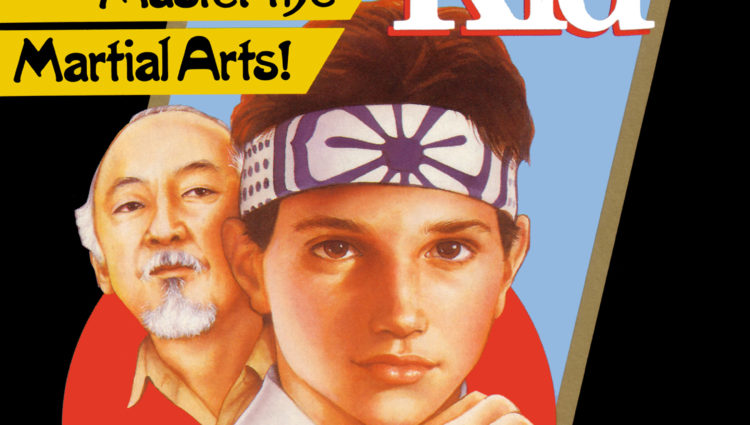005 – The Karate Kid
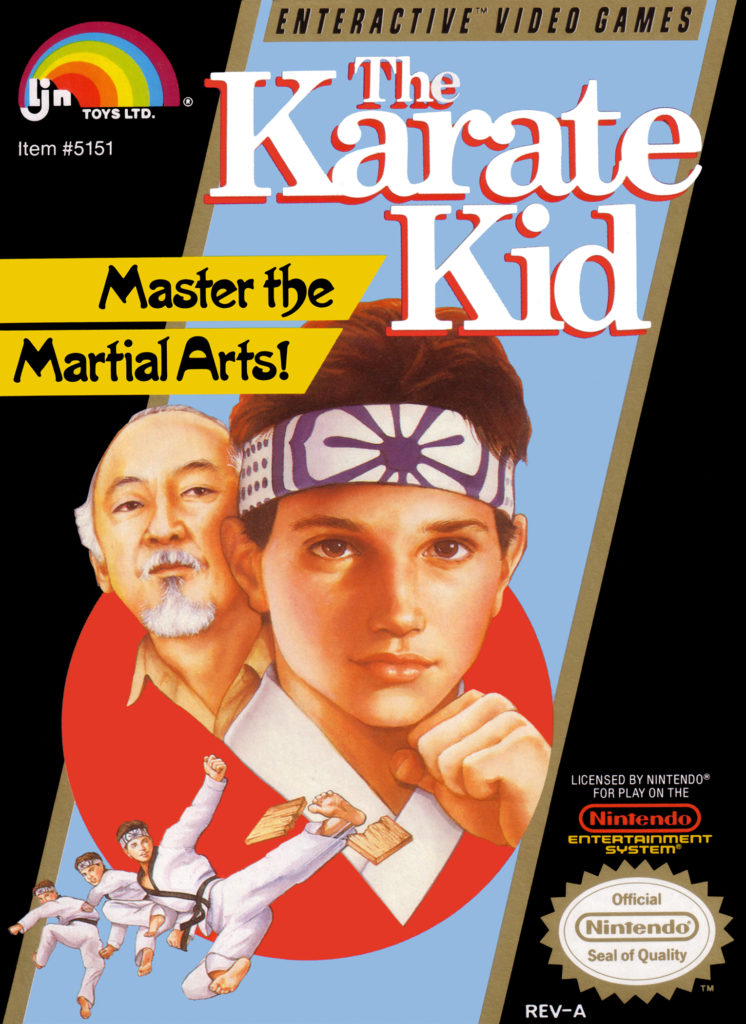
Year: 1989 | Publisher: LJN | Developer: Atlus | Action
Live Play | Play Through | 60 Seconds
Five Movies. Four Levels. Three Leads. Two Miyagis. One TV Show. A franchise so beloved it has a freshness date that doesn’t seem to expire. Though there were only two movies when the game was released, this game seemed so rushed that it was practically spoiled by the time it got to market. In fact if you haven’t seen both movies (the second one at the very least) then this game makes almost no sense.
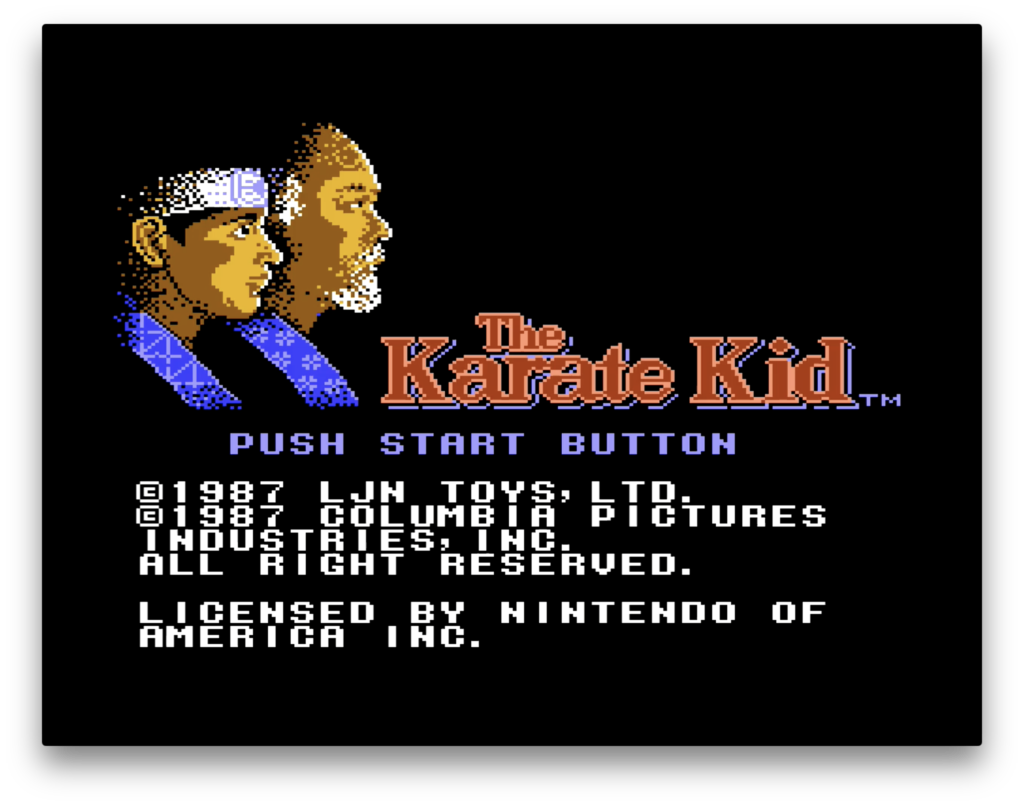
SOURCE: By the time of the release of this game, we had The Karate Kid 1 and 2. I was always interested in martial arts and this movie spoke to me. New kid in school. Bullied. Learns martial arts. Gets revenge. Sort of. It was a weird kid at school’s dream. I look back now and see some problems with the story. The idea of the Eastern Arts playing out and solving problems in Western Society wouldn’t fly very well today. But more importantly, the revenge aspect of the story is awfully. Much like Revenge of the Nerds, Daniel-san isn’t really the innocent, good guy that the story makes him out to be. In fact, he starts a lot of the fights that we’re supposed to be on his side for. At least in the first movie. It’s been a while since I’ve seen the second and third Ralph Machio films. However, the TV Show, Cobra Kai is AMAZING and if you’ve grown up with this franchise you should be watching it. But the source has problems. By the second film, Daniel and Miyagi travel to Okinawa for Miyagi’s family. While there, Daniel gets himself in trouble again. The third movie, if I remember, has Daniel becoming more aggressive and joining up with the rival dojo. This franchise is then rebooted with a female lead. That is honestly all I really remember from that film. And then rebooted again with Jackie Chan and Jayden Smith. This is really a Karate Kid film in name only as it takes place in China and he is learning Kung Fu. But still holds a lot of general concepts from the first film.
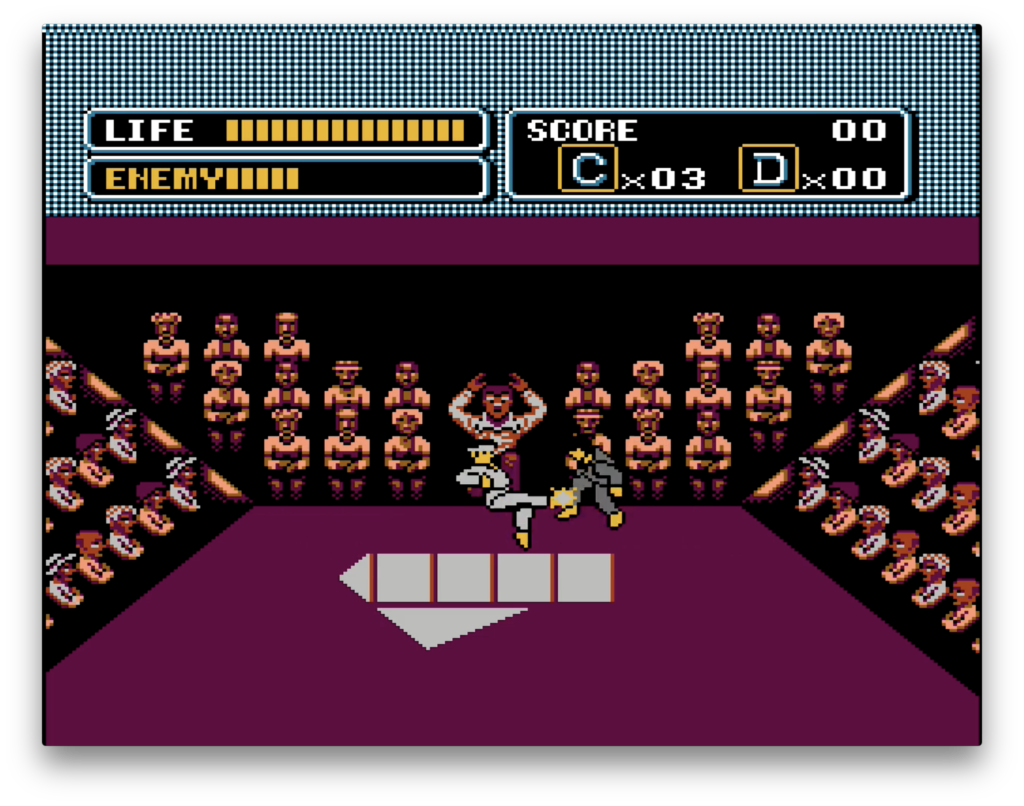
CONNECTION: The connection between the game and the first two movies is tenuous at best. So much that if you have never seen either film, then the game, characters, and special moves make no sense. Moving from level to level is helped along only with a title card that tells you where you are and you ultimately have no idea why you’re there. From the. First film, all you have is the karate tournament from the end. And you can literally finish that part of the game in less that 60 seconds. The remainder of the game is connected to the second film, but the reason for that is not really clear as there is plenty of material to make two separate games for the two films.
Gameplay: The title screen does a great job of connecting the game art to the movies. Fairly simple graphics and music. But it seems the mood and it does it well. The game has no cut scenes or sequences to move you from segment to segment and instead has one r two liners of tea telling you what is happening next. Maybe I’m spoiled with post NES games as even the SNES had simple sequences for most of its titles.
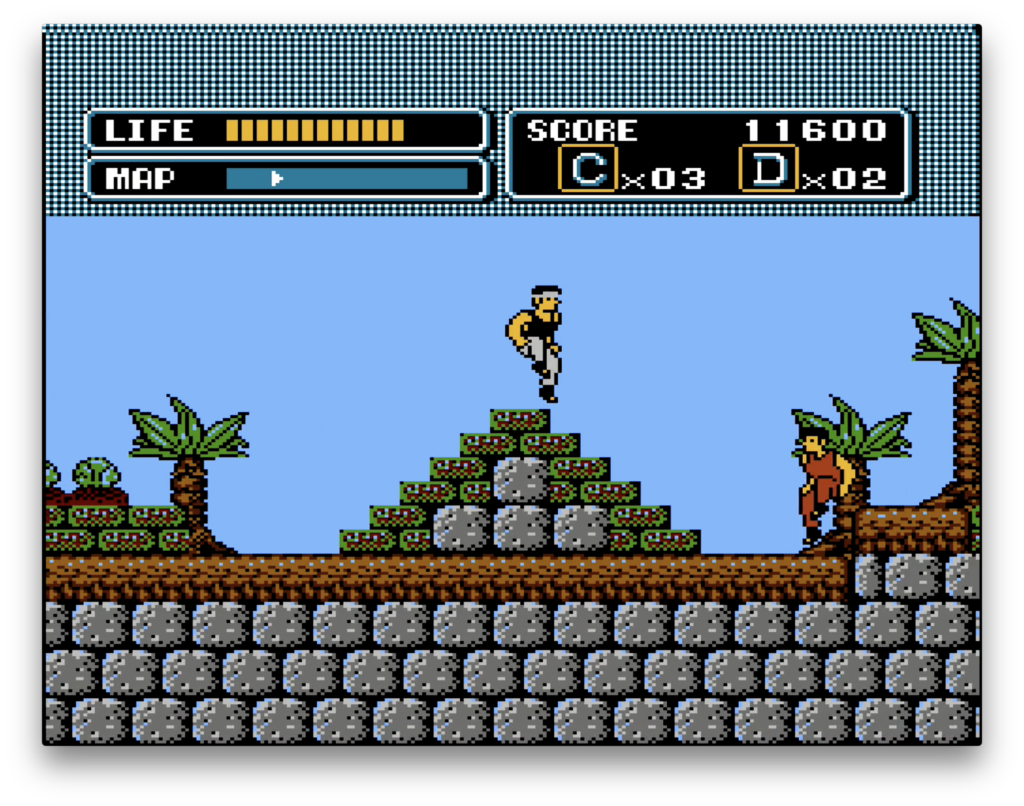
CONTROLS: The controls for the game are simple, and yet poorly designed. Jump, duck, and left/right combined with a punch or kick. Seems easy enough. Until you take in to account both the Crane Kick and the Drum Punch. Both special attacks have a limited number of uses that you can collect through either bonus stags or defeating enough enemies. The bonus stages make sense. But how can a bad guy drop a crane kick for you to pick up? And when dropped, they appear as a little C or D floating in the air. I suppose they needed a way for you to get more. It just seemed like someone forgot to finish th code for that feature but they ran it anyway. Jump kicks are a thing that works. Jump punches… not so much. Using your special attacks is really simple. Don’t move any direction and push A or B. This becomes a frustration when there is an enemy in front of you that you don’t need to Crane Kick but you also don’t ned to push forward to get to. It wouldn’t be hard to use all your special attacks one-right-after-the-other inadvertently.
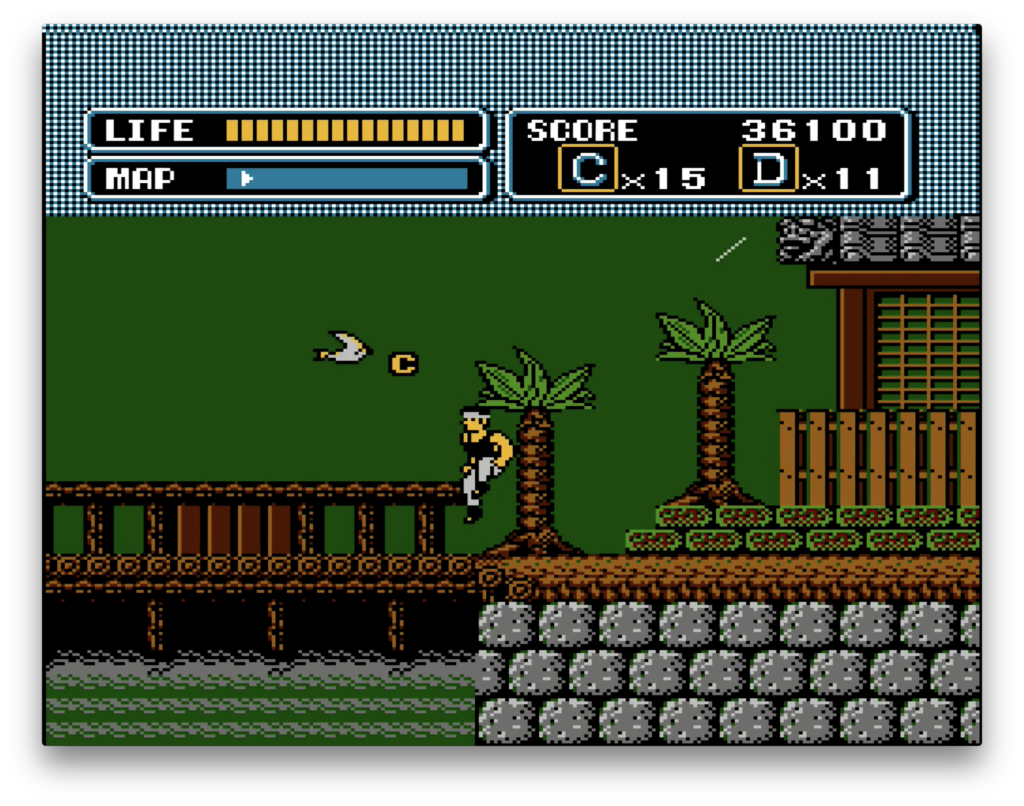
ENEMIES: The enemies are all very generic looking. Except for the color of their clothes, they are all identical. Taking a hit from one causes you to fall back a little bit on screen. While falling, you can’t control what you are doing and yet, you can be hit again causing you to go win the other direction. So if there is an enemy in front of and behind you, you can bounce back and forth until all your life is gone. Luckily there can only be two enemies on the screen at any given time and that can be used to your advantage. Though each stage has a boss at the end, the style of the game makes it difficult if not impossible to distinguish them from other enemies except for a new life meter on screen. Also, why are they after you? Who are they? They barely look different from those that you faced in the All Valley Karate Tournament. Are they after you? You don’t really know.
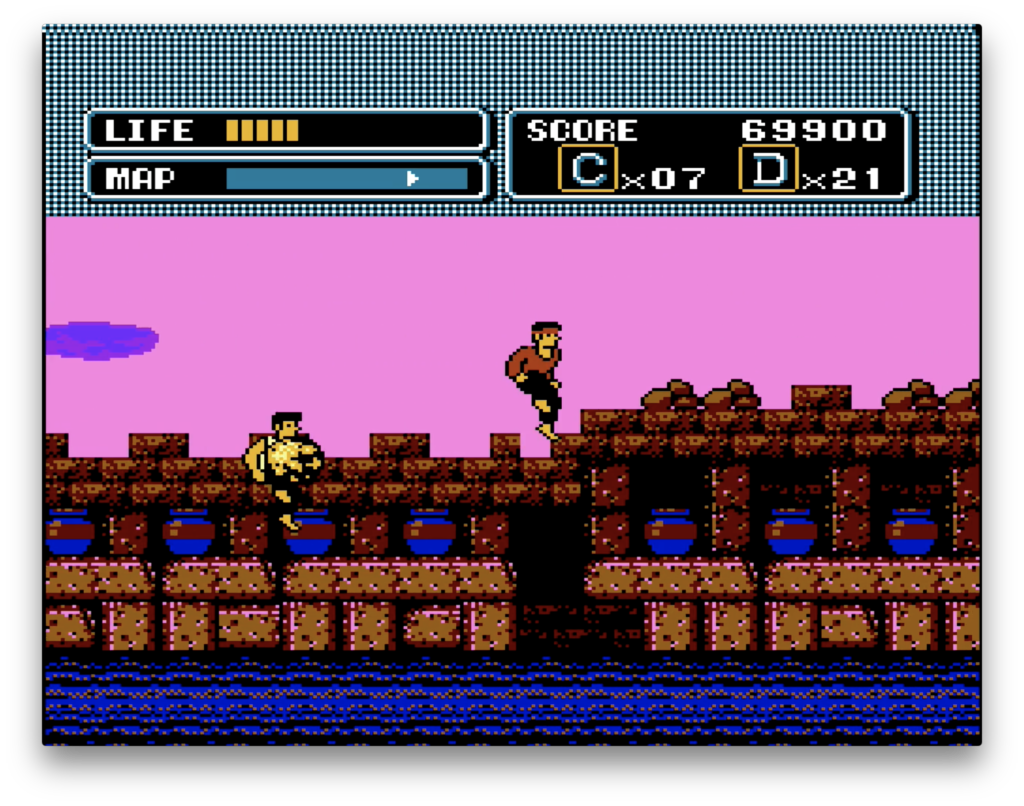
VISUALS: It really amazes me how some NES games have really great well thought out graphics and push the limits of 8bit technologies. You don’t really need to look much further than the original Super Mario Brothers or almost any of the first wave of NES games. This is not one of those games. Again, apart from the title screen, the graphics for this game feel rushed.
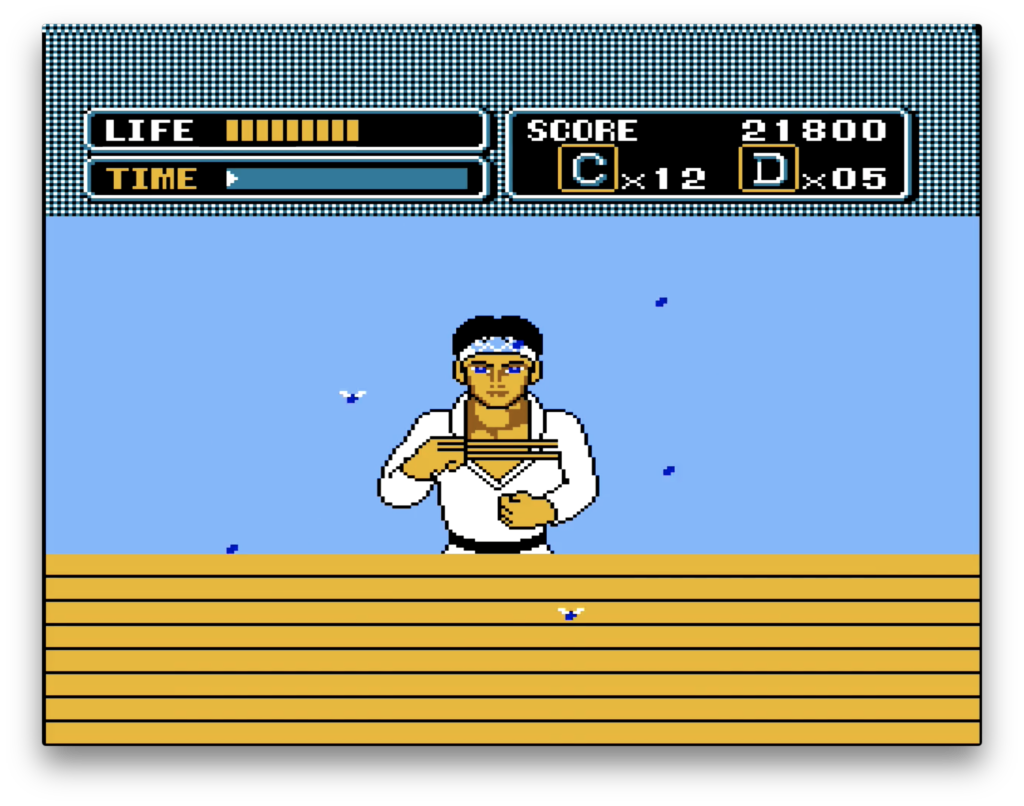
LEVELS: This is a very short game. Only four levels. I finished the game in about 17 minutes. But if you can get through without dying, you could probably do it in less than 15. The game starts at the end of TKK1 at the All Valley Karate Tournament. You work through the ranks of quarterly, semi, and then finals. But thee difficulty never changes. If you can get the first kick in, your opponent will just continue to walk into your kicks over and over again. You might not even lose any health doing it. Level 2 takes us to TKK2 and Daniel’s arrival in Okinawa. You’re running from one side of the village to the other but why? Level 3 and we’re still in thee village except there’s a typhoon. Virtually no difference between the levels. Level 4 takes place outside the village at their yearly festival, though they don’t say that. In fact, all it does tell you is that this is the final battle between Daniel-san and Chozen. Who’s Chozen? Where is he and why is he there? Who knows! In the movie, he is the “villain” of Part 2. The enemies are harder here. They know have weapons that are longer than your reach and it takes two hits to take one down. I get the idea of the game becoming more difficult as the levels advance, but this was an exponential jump in difficulty.
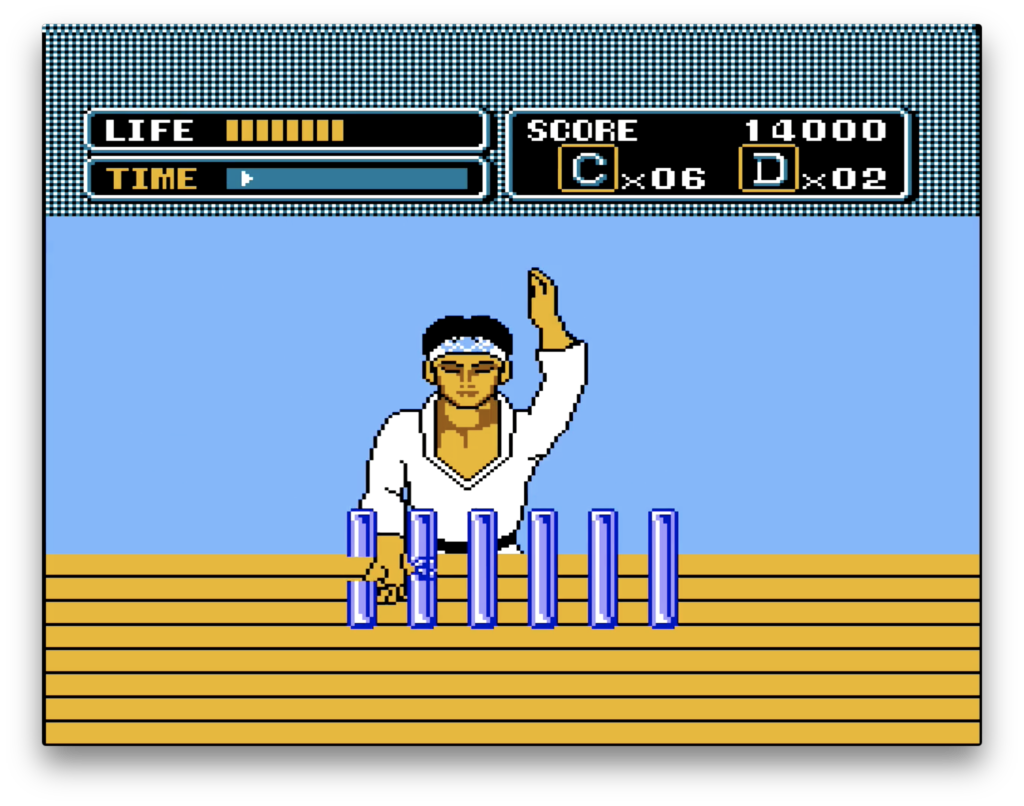
BONUS: There are three different bonus stages littered through levels 2-4. These are somewhat iconic scenes from the first to films and they’re actually pretty fun mini games. There’s catching flies with chopsticks. Patience and an examination of the circular flight patterns makes this a relatively easy one. There’s breaking the ice blocks. Time it just right where your power meter is at the max to get them all. And then the hammer swing. This one is so hard That I think I can count on one hand how many times I was able to get past the first swing. SPOILER ALERT!!! It was twice in my history of playing the game.
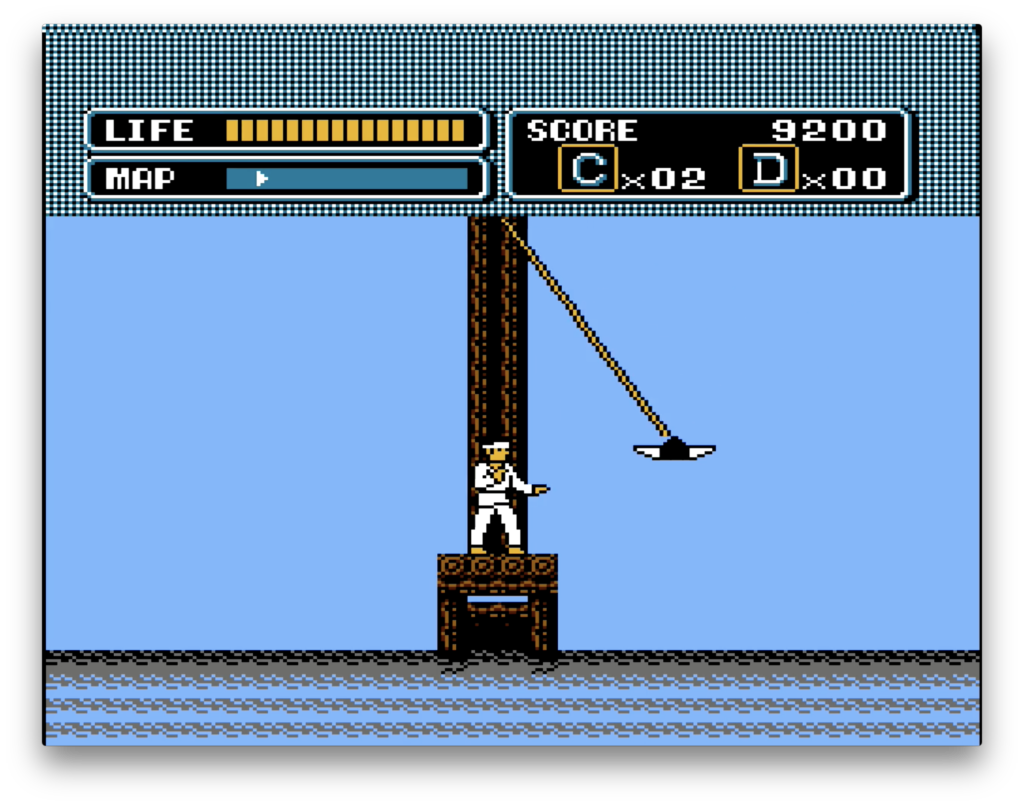
SOUND: There isn’t a lot by way of sound effects. Kick and punch use pretty much the same thing. Jump. Getting hit or striking someone else. Very simple sounds. The music is not bad. A different tune for each stage and it doesn’t just pop a 4 or 8 bar pattern. Each tune plays to the complexities of each level as well. If this game does anything right, it’s the music. It’s not Koji Kondo. But it works. The intro also has some very calming music. I don’t believe it has any connection to the films. But it sets the stage for an asian sounding flute or stringed instrument.
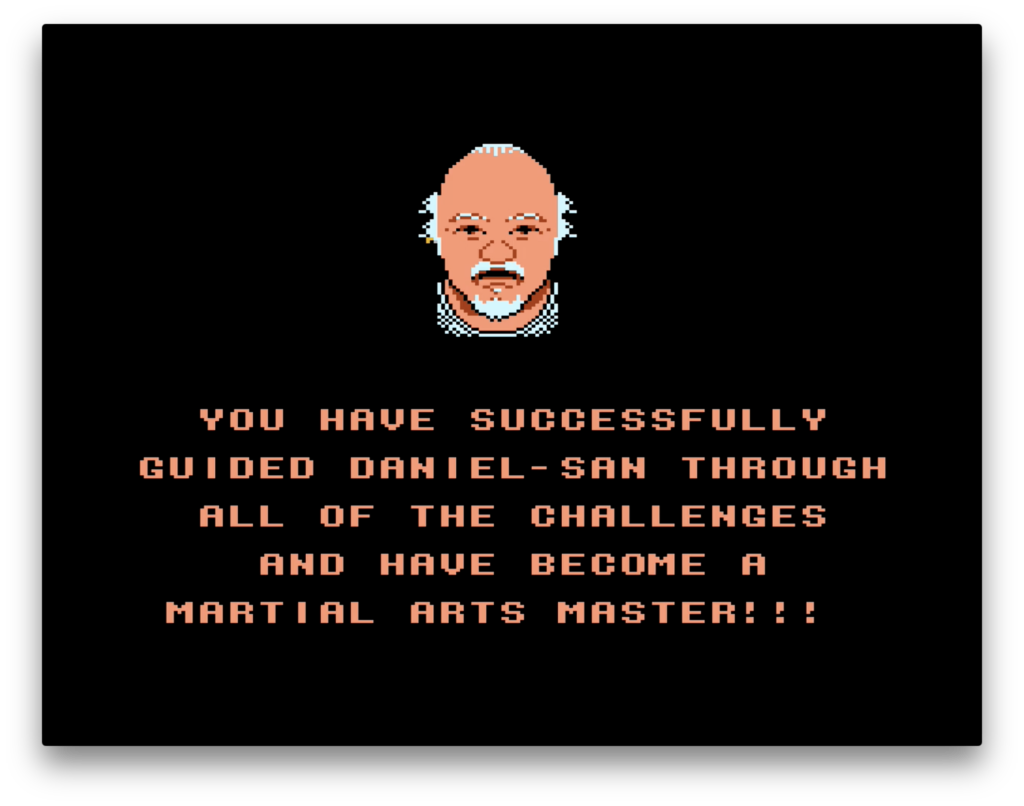
FINAL THOUGHTS: I’m not sure how much I can stress that this game does not work if you haven’t seen the movies. A pretty big difference from the previous review of Robocop. The game follows a story that is only present in the films and doesn’t try to explain anything to the player. The game was absolutely rushed to market. It reminds me of ET for the Atari 2600. Though this definitely didn’t kill Nintendo in any way (neither did ET for the Atari but we can go into that later), the game is easy, makes no sense, nothing is explained, is connected to a movie that you would have had to have seen to enjoy. That’s probably the worst bit. I couldn’t enjoy this game. Even knowing the storyline. This was the problem with LJN though. Rushing games to market but putting very little in to the actual game. Even a cut scene style like Robocop would have made connecting each level a lot better. Instead, I was just trying to go from left to right without knowing why. Like some weird, wind up automaton.
~E
YouTube: http://tinyurl.com/ReplayThePast
Twitch: https://www.twitch.tv/replaythepast/
